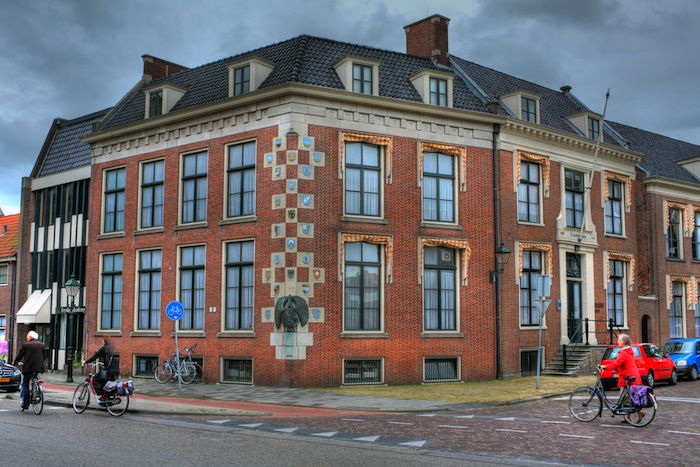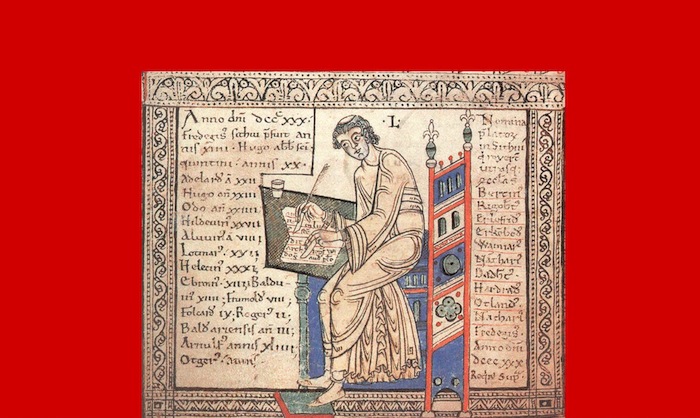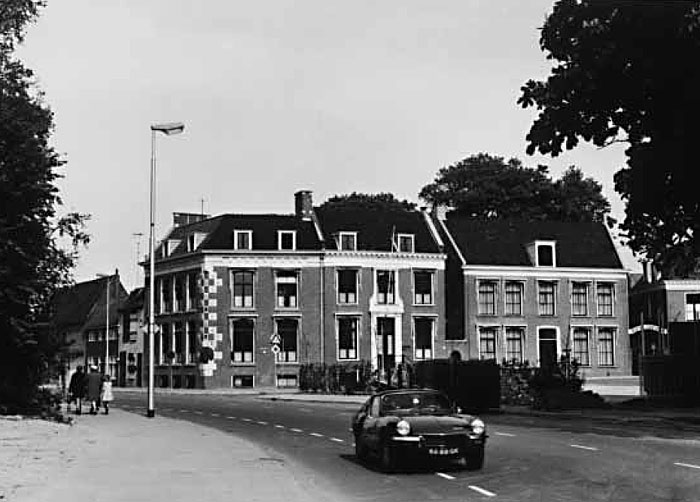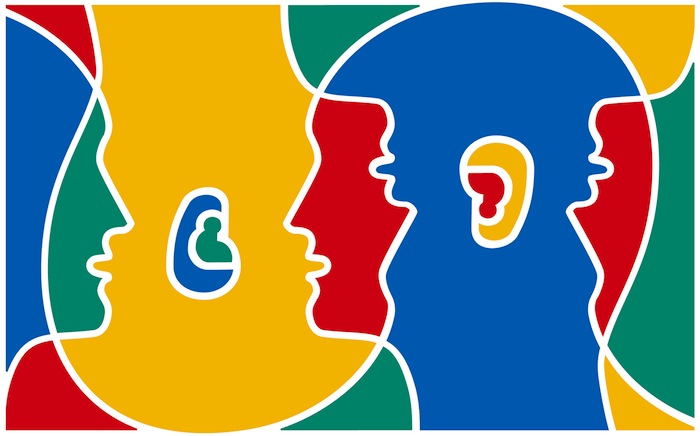Multilingualism is hot, why?
Publisearre op 1 augustus 2013
Meartalichheid is feitliks gjin keunst oan. Jo krije it mei en profitearje derfan. Dat hat net altyd sa west. Feitliks fiere talen altyd oarloch mei inoar, foaral as de iene dominearjen giet en de oare sichtber en hearber terrein ferliest. Krekt dan komme minsken – idealisten, perverselingen – yn aksje. En wittenskippers fansels. Wat hâldt it ûndersyk nei it talige fermogen fan minsken krekt yn? En hoe komt it dat meartalichheid de lêste tiid sa’n trend liket te wêzen? Trije eksperts út it fjild jouwe antwurd.
Jasone Cenoz / Professor of Research Methods in Education, University of the Basque Country, UPV/EHU
Multilingualism has a long history and famous multilingual individuals have always been admired. Some examples are Cardinal Giuseppe Caspar Mezzofanti (1774-1849), who spoke at least 38 languages and John Bowring (1792-1872), an English politician and economist, who was fluent in 100 languages and had a basic understanding in many more. Being able to communicate in other languages has also been traditionally part of the skills of a well-educated person.
Multilingualism is not a new phenomenon but there are several factors that have contributed to its spread and greater visibility in the last years. One of the most important factors is globalization including transnational mobility of the population, and the spread of new technologies. Another factor is the spread of English as a language of international communication. In fact, speakers of any other language often need English to communicate not only with speakers of English but also with speakers of any other language. The promotion and development of some minority languages such as Frisian, Basque or Welsh also contributes to the development of multilingualism.
Multilingualism has specific characteristics nowadays. It is no longer associated with some professions or social strata because the spread of education and globalization have made multilingualism more available for the whole population. Moreover, multilingualism has spread over different parts of the world and is not limited to geographically close languages and special borders or trade routes.
Multilingualism is seen nowadays as a positive asset for individuals and societies. Researchers are trying to identify specific neurological, psychological and social characteristics of multilingual individuals that make them unique as compared to monolinguals.
Gwyn Lewis / Deputy Head of the School of Education, Bangor University
In Wales of the 21st Century, bilingual education (i.e. Welsh and English) has an increasingly high profile and – alongside other countries where bilingual and multilingual education flourishes – Wales has a long and distinguished history of minority language education as it shares international leadership of bilingual education policies and practices.
The advantages of bilingual education in the Welsh context have been summarized succinctly in the Welsh Government’s Welsh-Medium Education Strategy (Cardiff, 2010: 2.18):
The advantages that bilingualism can bring are well documented. These range from the direct advantages of being able to use particular languages (for example to communicate with family members and wider social networks or to enhance career opportunities) to the more general advantages of promoting cognitive skills, increasing mental agility and broadening speakers’ range of cultural experiences. Research … reveals that bilingualism enhances attention and cognitive control in children and older adults . . . and that speakers of two languages find it easier to focus on a range of tasks, blocking out potential distractions. Providing opportunities for speakers to develop their bilingual skills through education therefore makes a valuable contribution to a broad range of social and cultural experiences.
Welsh-medium and bilingual education is in great demand in Wales today, as it continues to develop and flourish in the twenty-first century in accordance with the needs and aspirations of those children and parents who choose such an education. As the Chief Executive of Gwynedd County Council (a local authority in north west Wales) expressed, when its pioneering bilingual education policy was established back in 1974: ‘We bring up our children to speak Welsh and become bilingual, not for the sake of the language, but for the sake of our children.’
Albina Nećak Lük / Prof.em. at the Department of Comparative and General Linguistics, University of Ljubljana
According to the Babylon legend, some 3000 years ago the mankind was punished for its arrogance and lack of humility by loosing the common language and hence the means of a perfect communication. Instead, a multitude of languages/ dialects was enforced upon man. Language diversity was installed as an universal and omnipresent feature. On the other hand, however, – luckily enough – the man is endowed with an universal ability to learn any language of the world.
Possible consequences of this endowment are multiple. Not only can man acquire any language that he finds useful for fulfilling his communication needs and thus overcome the »curse« of language diversity. There is an additional value in the language learning experience. Namely, when the first language competence is firmly established, any other language in the row, the second, the third, etc. is more easily grasped on account of the so called ‘common underlying language proficiency’. Even more, recent research has proven positive correlation between the individual’s bilingual competence and general intelligence, the bilinguals having surpassed their monolingual equals in comprehension and problem-solving tests. Positive correlation also seems to exist between the bi- and plurilingual competence and the speech recovery after brain stroke.
However, these psycho- and neurolinguistic advantages of bi- and plurilingual competence are probably not the direct reason for the widely spread interest for language learning in Europe and also worldwide, today. I believe that reasons are mostly economical, sociological and cultural. They are closely related to the democratization and specifically to globalization: As we know, in different periods of time, in different parts of world bilingualism/plurilingualism had different reputation among different social layers. It is safe to claim that since the ancient times it was welcomed and appreciated by higher social layers, while the so called mass or grass-root bilingualism was a reason for suspicion and even rejection. During past, let us say, fifty years the sociolinguistic perspective about bi- and plurilingualism has fundamentally changed. In most European countries they are on the way to become a mass phenomenon.
To my mind, it is with the European endeavors to develop language education policies in order to support and promote the free flow of goods, people and information, that plurilingualism as a speaker’s ability ‘to learn and use more than one linguistic variety, whatever their nature – mother tongue, language learned at school, foreign language, etc.’ (Guide for the Development of Language Education Policies in Europe, p.34), has gained new value and appreciation. In this vain, plurilingualism goes along with preservation of European multilingualism, i.e. European diversified language heritage.
It has become hot! Especially among young people.
However, a reflection seems to be tempting: what if as the means of mutual communication among peoples only one and the same language prevails in addition to our first one? Would such a process lead to a kind of a new preBabylon era?

Kategory
Tags
Albina Nećak Lük, Babylon, Bango, Giuseppe Caspar Mezzofanti, Gwyn Lewis, Jasone Cenoz, Ljubjana, meartalichheid, multilingualism, Welsh-Medium Education Strategy, wittenskip
Diel dit artikel!
Relatearre artikels

Kategory: Dossier,Frysk yn it ûnderwiis
Fan ‘e hjerst ferskynde in Steatebibel-tsjok skiedniswurk oer de rige doarpen te’n noard-easten fan it Hearrenfean: Terbant, Tsjalbert, Lúnbert en Gersleat. In boek oer de [...]

Kategory: Dossier,Frysk yn it ûnderwiis
TONY FEITSMA - Ynlieding It idee fan Lammert Jansma om ta in universitêre fêstiging yn Ljouwert te kommen dy’t him – yn oparbeidzjen mei [...]

Kategory: Dossier,Frysk yn it ûnderwiis
JOHAN FRIESWIJK - Yn de Nederlânske wittenskiplike wrâld liket de Fryske Akademy in nuveraardich ynstitút. Fansels, der binne mear regionale ynstellings op dat mêd, as [...]

